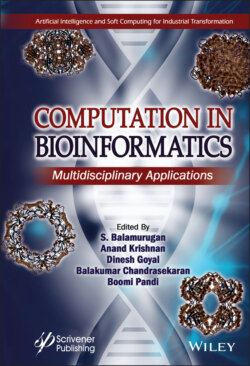Читать книгу Computation in BioInformatics - Группа авторов - Страница 38
2.3.5 Molecular Similarity Methods
ОглавлениеAs the foundation of structure-movement relationship (SAR) and basic grouping examination, sub-atomic likeness is a significant idea in LBDD. Closeness-based virtual screening and molecular positioning are viewed as one of the most incredible assets in restorative science and have been effectively applied in various cases. Comparability looking through projects can by and large be classified into 2D and 3D similitude as indicated by whether 3D adaptation data is considered. 2D likeness techniques are productive for rapidly profiling neighboring mixes. Be that as it may, it might somewhat give various hits to indistinguishable questions from various 2D likeness definitions target various parts of the data. This strategy likewise will, in general, find close auxiliary analogs rather than novel platform hits. Notwithstanding, 3D comparability techniques ordinarily think about different parts of the 3D adaptation, including pharmacophores, atomic shapes, and sub-atomic fields. 3D strategies can be advantageously used to achieve platform jumping to distinguish novel mixes.
In light of the pharmacophore coordinating methodology, which was utilized as the motor of the recently referenced PharmMapper Server, a strategy named SHAFTS (SHApe-FeaTure Similarity) has been created for quick 3D sub-atomic closeness figuring. This technique embraces crossbreed similitude measurements of sub-atomic shape and hued (or marked) science bunches commented on by pharmacophore highlights for 3D computation and positioning so as to incorporate the quality of both pharmacophore coordinating and volumetric likeness draws near. The triplet hashing technique is utilized to count quick sub-atomic arrangement presents. The cross-breed likeness comprises of shape-density covers and pharmacophore highlight fit qualities and is utilized to score and rank arrangement modes. SHAFTS accomplished unrivaled execution as far as both by and large and beginning time improvements of known actives and chemo-types contrasted with other ligand-based strategies. SHAFTS has been incorporated into ChemMapper Server (unpublished outcome). Spherical harmonic (SH) is a lot of symmetrical round capacities that can without much of a stretch speak to the state of a shut bend surface, for example, a sub-atomic surface. SH extension hypothesis has been effectively applied in virtual screening, protein-ligand acknowledgment, restricting pocket displaying, atomic section closeness, etc. SHeMS is a novel atomic shape comparability correlation technique got from SH extension. In this technique, the SH extension coefficients are weighted to compute closeness, prompting an unmistakable commitment of generally and point by point highlights to the last score. What is more, the reference set for improvement can be designed by the client, which takes into consideration framework explicit and redid correlations. A retrospective VS experiment on the directory of useful decoys (DUD) database and principal component analysis (PCA) reveals that SHeMS provides dramatically improved performance over the original SH (OSH) and ultra-fast shape recognition (USR) methods.
